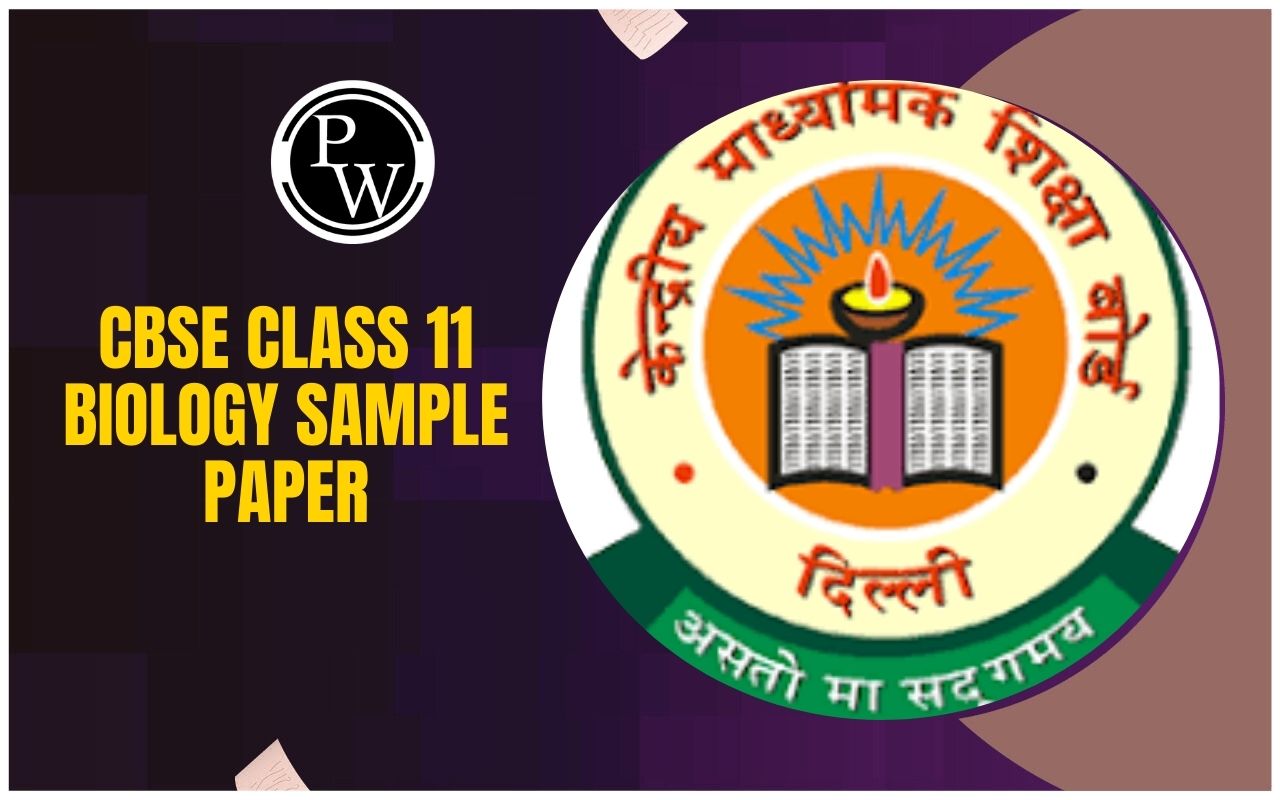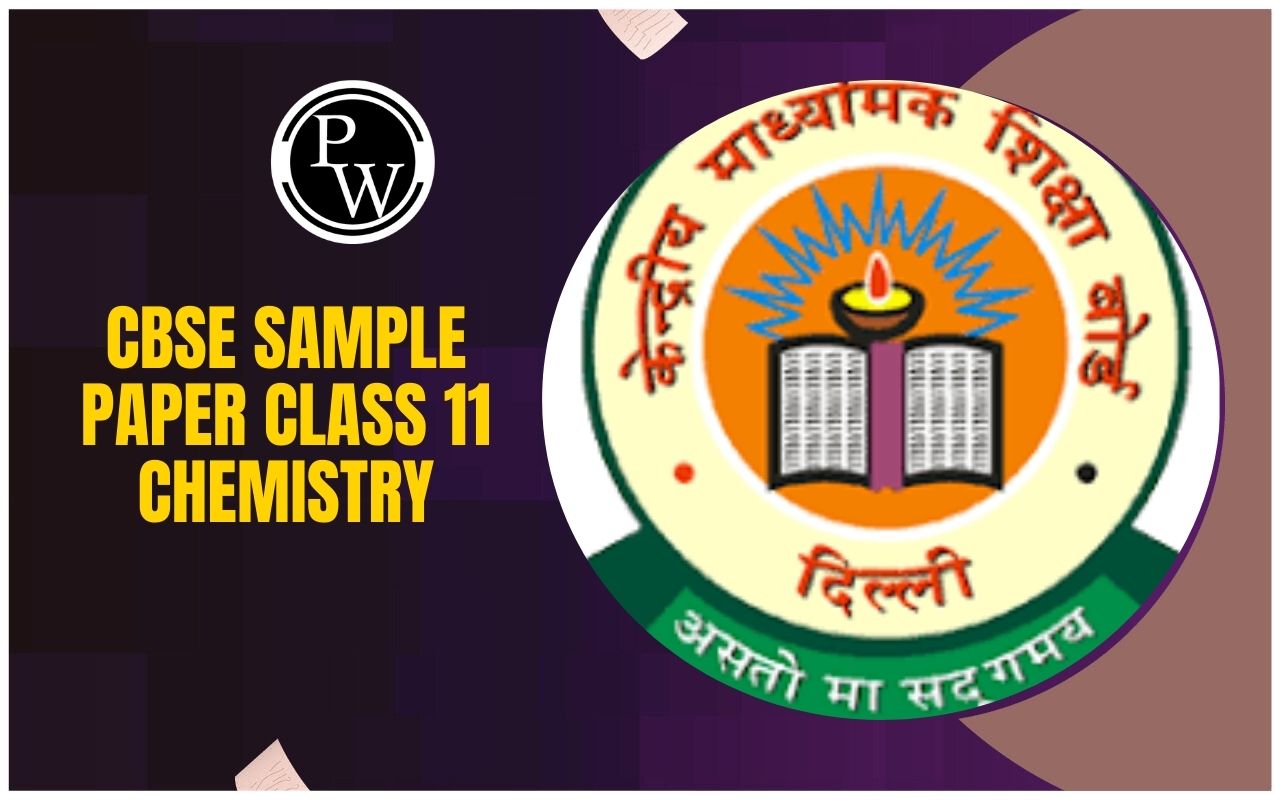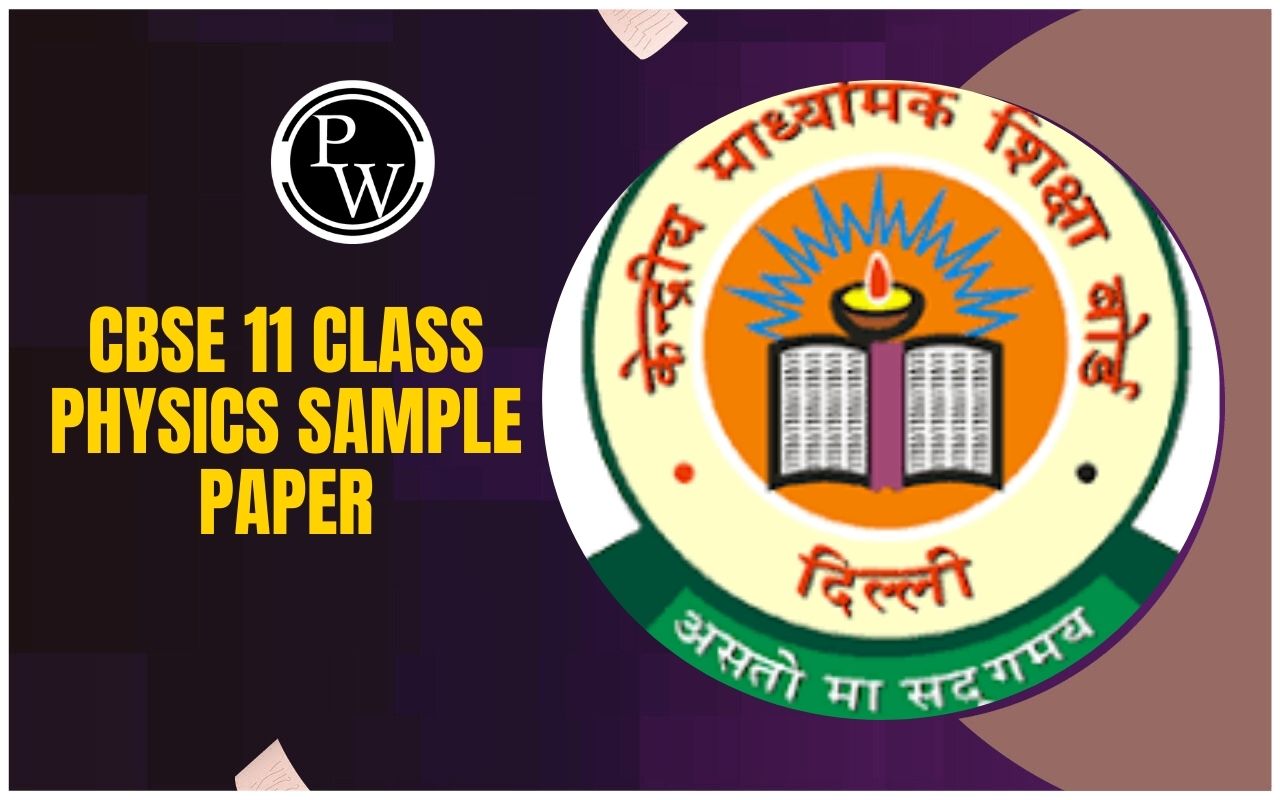
NCERT Solutions for Class 11 Biology Chapter 11 Science: Chapter 11 of Class 11 Biology, "Photosynthesis in Higher Plants," explores the intricate process of photosynthesis, emphasizing its significance in sustaining life on Earth. The chapter delves into the structure of chloroplasts, the role of chlorophyll pigments, and photosynthesis's light and dark reactions .
It explains photophosphorylation, the Calvin cycle, and the differences between C3, C4, and CAM pathways. The importance of light intensity, carbon dioxide, and temperature in influencing photosynthesis is also discussed. The chapter integrates experiments and diagrams to comprehensively understand how higher plants convert solar energy into chemical energy.NCERT Solutions for Class 11 Biology Chapter 11 Overview
Chapter 11 of Class 11 Biology, "Photosynthesis in Higher Plants," highlights the critical process of photosynthesis, which forms the foundation of life by converting solar energy into chemical energy. The chapter explains essential concepts such as the role of chloroplasts, photosynthetic pigments, and the biochemical pathways like the Calvin cycle, C3, C4, and CAM pathways. Understanding these processes is vital for appreciating how plants sustain ecosystems, regulate atmospheric gases, and serve as primary producers in food chains. NCERT Solutions for this chapter provide detailed explanations and problem-solving approaches, aiding students in mastering these concepts and excelling in exams with clarity.NCERT Solutions for Class 11 Biology Chapter 11 PDF
Chapter 11 of Class 11 Biology, "Photosynthesis in Higher Plants," covers the essential process of photosynthesis, explaining its mechanisms like light and dark reactions, photophosphorylation, and different pathways such as C3, C4, and CAM. Understanding these concepts is crucial for exams and a deeper grasp of plant biology. Below, we have provided a comprehensive PDF of NCERT Solutions to help students with detailed explanations and step-by-step answers.NCERT Solutions for Class 11 Biology Chapter 11 PDF
NCERT Solutions for Class 11 Biology Chapter 11 Photosynthesis In Higher Plants
Below is the NCERT Solutions for Class 11 Biology Chapter 11 Photosynthesis In Higher Plants questions answers-
Question 1:
By looking at a plant externally can you tell whether a plant is C3 and C4 ? Why and how?
Solution 1:
We cannot determine whether a plant is C3 or C4 based from its outward look. On the other hand, a plant that thrives in arid environments uses the C4 route. A C4 plant's leaves differ from C3 plants in several ways, but only at the cellular level can these differences be seen.
Question 2:
By looking at which internal structure of a plant can you tell whether a plant is C3 or C4? Explain.
Solution 2:
C4 leaves differ from C3 leaves in that they have a specific anatomy called Kranz anatomy. The bundles of vascular cells of C4 family plants are encased in unique vascular sheath cells. These cells have a lot of chloroplasts. Their walls are thick, and they lack intercellular gaps. We can identify whether a plant is C3 or C4 based on its internal structure.
Question 3:
Even though a very few cells in a C4 plant carry out the biosynthetic – Calvin pathway, yet they are highly productive. Can you discuss why?
Solution 3:
Because of its enzyme site's ability to accumulate CO2 on its own, a C4 plant is incapable of photorespiration. The release of CO2 from the breakdown of C4 acid in the bundle sheath's cells causes an increase in intracellular concentration. In the end, this guarantees that oxygenase activity is reduced and that RuBisCO functions as an effective carboxylase.As a result, photosynthesis rates rise, raising C4 plant productivity.
Question 4:
RuBisCo is an enzyme that acts both as a carboxylase and oxygenase. Why do you think RuBisCo carries out more carboxylation in C4 plants?
Solution 4:
The RuBisCo enzyme is absent from plants in the C4 family. This protein is not present in bundle-sheath cells; rather, they encircle vascular bundles. Calvin cycles therefore do not occur in bundle-sheath cells in plants with C4 cells. Three-carbon phosphoenol pyruvate is the primary mechanism by which CO2 is taken up by mesophyll cells.
It undergoes this reaction to become the four-carbon molecule known as oxaloacetic acid (OAA).OAA undergoes further conversion to malic acid. In bundle-sheath cells, the Calvin cycle decarboxylates malic acid to CO2. Because of this, RuBisCo is no longer able to act as an oxygenase.
Question 5:
Suppose there were plants that had a high concentration of Chlorophyll b, but lacked chlorophyll a, would it carry out photosynthesis? Then why do plants have chlorophyll b and other accessory pigments?
Solution 5:
A plant without chlorophyll a would not be able to perform photosynthetic activity since it is the primary pigment linked to photosynthesis since it traps light.
The process of light absorption and energy transfer to chlorophyll a depends equally on the other accessory pigments, including carotenoids, xanthophylls, and chlorophyll b. Additionally, they lessen the photooxidation of chlorophyll while allowing photosynthesis to occur throughout a larger wavelength range.
Question 6:
Why is the colour of a leaf kept in the dark frequently yellow, or pale green? Which pigment do you think is more stable?
Solution 6:
The green pigment chlorophyll is unable to absorb light without light, therefore losing its stability. The leaves thus change from green to yellow. Xanthophyll and carotenoids are some of the more stable accessory pigments.
Question 7:
Look at leaves of the same plant on the shady side and compare it with the leaves on the sunny side. Or, compare the potted plants kept in the sunlight with those in the shade. Which of them has leaves that are darker green? Why?
Solution 7:
Compared to plants or leaves in direct sunlight, leaf surfaces in shade receive less sunlight, which results in less photosynthesis. Photosynthesis is enhanced by leaf pigments found in shaded places. The more chlorophyll a leaf has, the more light it absorbs, which improves photosynthesis and makes the leaf greener in the shade than in the sun.
Question 8:
Given below figure shows the effect of light on the rate of photosynthesis. Based on the graph, answer the following questions:
(a) At which point/s (A, B or C) in the curve is light a limiting factor?
(b) What could be the limiting factor/s in region A?
(c) What do C and D represent on the curve?
Solution 8:
Light intensity and photosynthesis rate graph
(a) In the given graph, light serves as a limiting factor where photosynthesis occurs to the lowest degree. As a result, light is limiting at point A.
(b) Light can limit the growth of plants; water, temperature, and carbon dioxide concentration are also factors.
(c) At stage C, light is no longer a limiting variable. Photosynthesis has already reached its highest rate at point D when light intensity no longer affects photosynthesis.
Question 9:
Give comparison between the following:
(a)C3 and C4 pathways
(b) Cyclic and non-cyclic photophosphorylation
(c) Anatomy of leaf in C3and C4 plants
Solution 9:
(a) C3 and C4 pathways
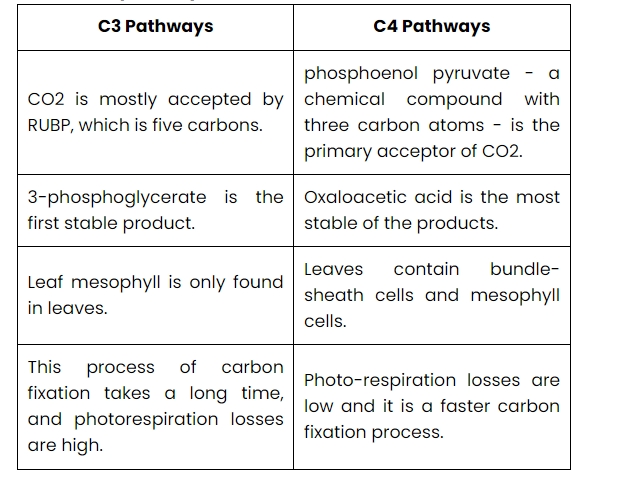
(b) Cyclic And Non-cyclic Photophosphorylation
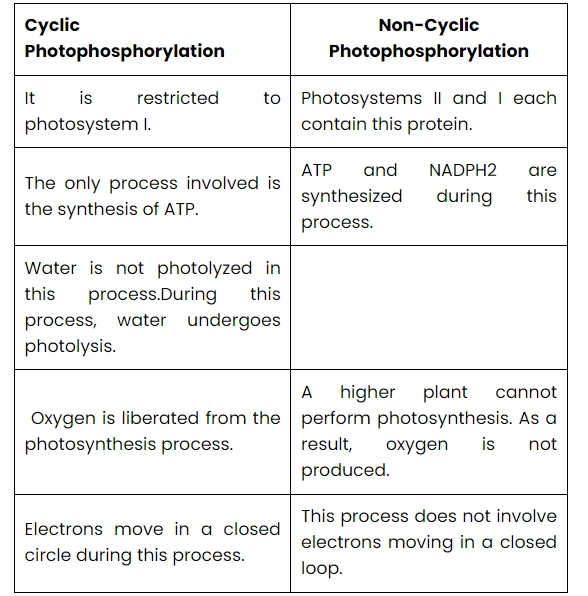
(c) Anatomy of Leaf in C3 and C4 Plants
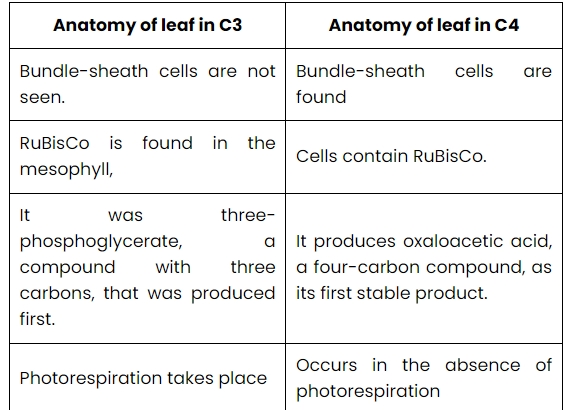
Benefits of Using NCERT Solutions for Class 11 Biology Chapter 11
Comprehensive Understanding : Solutions simplify complex concepts like light and dark reactions, Calvin cycle, and photophosphorylation for better clarity.
Exam Preparation : Detailed answers align with the CBSE exam pattern, helping students score well.
Conceptual Clarity : Step-by-step explanations ensure a deeper understanding of processes like C3, C4, and CAM pathways.
Time Management : Organized solutions save time by offering accurate and concise answers.
Practice and Revision : Solving questions enhances problem-solving skills and reinforces key concepts.
Accessible Format : Solutions are available in an easy-to-download PDF for convenient learning anytime.
NCERT Solutions for Class 11 Biology Chapter 11 FAQs
What does photosynthesis in higher plants need?
What factors affect the rate of photosynthesis in higher plants?
What is the mechanism of photosynthesis in higher plants?
What temperature does photosynthesis work best at?


